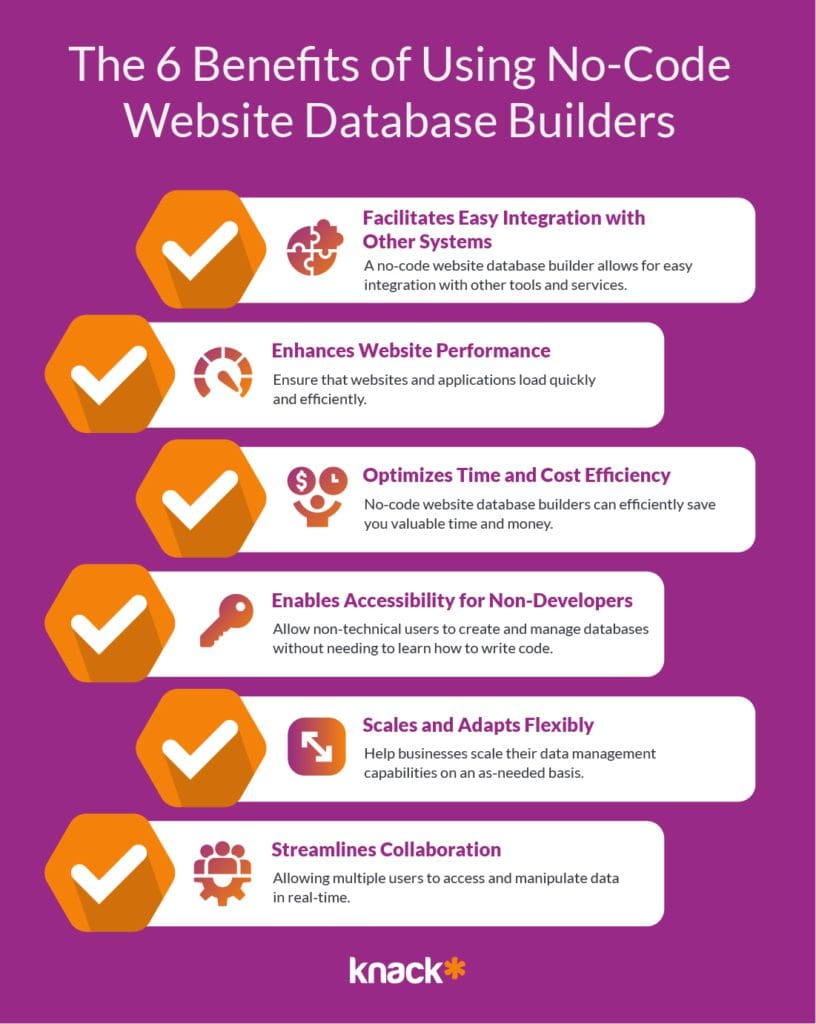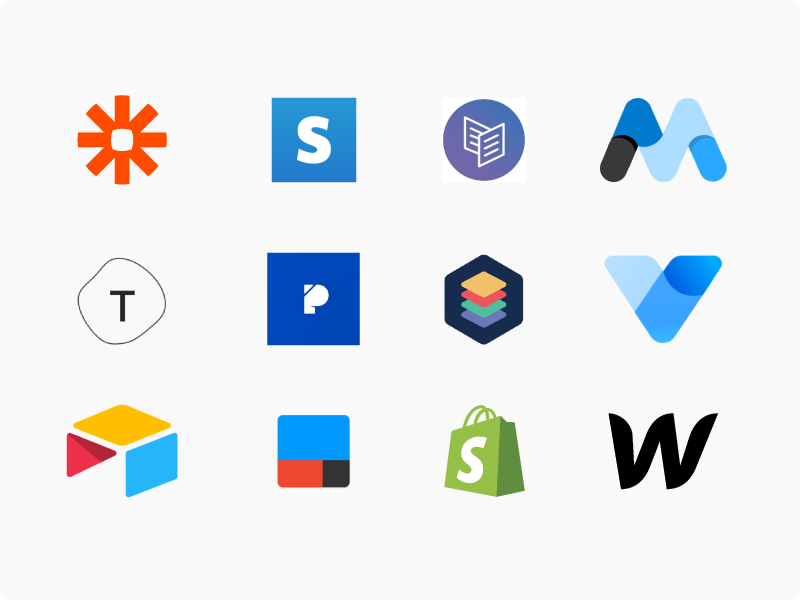Unlocking the Possible of Scalable Databases: No Coding Needed for Seamless Data Integration and Monitoring
The emergence of no-code options is transforming just how organizations approach scalable data sources, allowing smooth data assimilation and management without the need for considerable coding skills. As businesses look for to harness the power of their information, the essential features and prominent tools that promote this transition warrant more detailed evaluation.
Recognizing Scalable Databases
Exactly how do scalable databases suit the expanding demands of modern-day applications? Scalable data sources are made to handle increasing volumes of information and customer demands without compromising performance.
In addition to scaling methods, scalable databases typically include innovative building functions, such as sharding and replication. Sharding divides data right into smaller sized, workable pieces, making it possible for parallel handling and minimizing action times. Duplication guarantees data availability and resilience by creating duplicates of information across multiple nodes, safeguarding against possible information loss.
In addition, modern-day scalable data sources leverage cloud computing technologies, making it possible for dynamic resource appropriation based upon need. This adaptability permits organizations to respond quickly to varying work, making certain ideal performance and customer experience. As services progressively depend on data-driven decision-making, understanding scalable data sources comes to be necessary for utilizing their potential in sustaining modern applications.
Advantages of No-Code Solutions
As companies progressively adopt scalable databases to manage their growing data demands, the demand for easy to use development devices has actually likewise risen. No-code solutions are arising as a vital element in this landscape, supplying several crucial benefits that enhance functional performance and ease of access.

Secondly, these remedies substantially speed up the development procedure. By eliminating the demand for coding, companies can rapidly model applications, iterate on layouts, and deploy remedies in a portion of the time called for by standard methods. This dexterity enables organizations to react swiftly to market needs and changing problems.
Additionally, no-code systems often come outfitted with pre-built layouts and assimilation abilities, simplifying the connection with existing systems. This decreases the intricacy commonly linked with information combination, eventually lowering the complete expense of possession. Therefore, organizations can concentrate on leveraging information understandings instead of getting stalled in technological ins and outs, maximizing their tactical potential.
Key Features for Information Combination
Efficient information combination is necessary for companies seeking to harness the full potential of their scalable data sources. Secret functions that promote smooth information integration consist of robust data ports, automated information mapping, and real-time data synchronization.
Durable data connectors allow companies to connect numerous information resources, whether they live on-premises or in the cloud, making certain thorough accessibility to varied datasets - no-code. Automated data mapping streamlines the procedure of aligning diverse data styles and structures, allowing for quicker and a lot more accurate combination procedures. This function decreases the requirement for hand-operated intervention, reducing the possibility for errors
Real-time information synchronization is another critical function that makes certain data uniformity throughout platforms. By upgrading data in real-time, organizations can maintain a updated and accurate view of their info landscape, which is important for prompt decision-making. Additionally, user-friendly dashboards and aesthetic analytics improve the presence of integrated data, sites enabling stakeholders to acquire workable insights effortlessly.
Finally, information administration capacities guarantee conformity with laws and internal policies, securing delicate information while advertising a society of information stability. Jointly, these attributes equip companies to accomplish efficient and reliable information assimilation.
Popular No-Code Equipment Available
Organizations significantly depend on no-code tools to improve their information assimilation procedures and simplify operations. These platforms get rid of the demand for additional hints comprehensive shows understanding, allowing individuals to develop applications and take care of data with intuitive aesthetic user interfaces. Amongst the most popular no-code tools are Airtable, Zoho Creator, and Bubble, each offering unique attributes customized for different service requirements.
Airtable combines the simplicity of spreadsheets with the functionality of data sources, permitting individuals to team up and arrange on data successfully. Zoho Developer offers a considerable suite of customizable applications, making it possible for individuals to integrate and automate process with other Zoho items flawlessly. Bubble attracts attention for its capability to create innovative internet applications without coding, accommodating enterprises and start-ups alike.
Additionally, devices like Zapier and Integromat assist in automated operations by integrating numerous applications, allowing customers to attach data resources effortlessly. These no-code remedies not only conserve time however also equip groups to concentrate on calculated campaigns as opposed to technological obstacles. As organizations proceed to embrace electronic improvement, the adoption of no-code devices is readied to revolutionize the means data integration and monitoring are approached, driving performance and innovation.
Real-World Usage Cases
Numerous markets have efficiently carried out no-code devices to attend to specific difficulties and boost operational effectiveness. In the medical care sector, for instance, service providers use no-code systems to streamline client document monitoring and appointment scheduling. By integrating different information resources without extensive coding, medical care professionals can concentrate much more on person care instead of management jobs.
In retail, companies utilize no-code databases to handle stock and sales data in genuine time. no-code. This permits for fast decision-making pertaining to supply degrees and advertising techniques, eventually enhancing client contentment and sales performance
Moreover, financial institutions have adopted no-code services to automate compliance reporting and data analysis, reducing manual errors and accelerating response times to regulatory changes.

These real-world usage cases show the convenience and effectiveness of no-code devices in various fields, proving that scalable databases can drive technology and operational effectiveness without the demand for extensive programs expertise.
Final Thought
Finally, the assimilation of no-code services right into scalable data source management represents a substantial advancement in data handling capacities. By helping with seamless connections in between varied data sources and automating process, these devices encourage companies to look at this site successfully take care of growing data volumes without the need for technical knowledge. The resultant enhancement in operational effectiveness and data-driven decision-making highlights the transformative possibility of these innovative approaches within various industries, eventually sustaining critical purposes and fostering organizational growth.
Duplication ensures data schedule and longevity by producing copies of information across numerous nodes, safeguarding against prospective information loss. - no-code
Durable information ports enable companies to link different information resources, whether they reside on-premises or in the cloud, making certain comprehensive access to varied datasets. Automated information mapping streamlines the process of straightening inconsonant information layouts and frameworks, permitting for quicker and extra accurate integration procedures.Real-time information synchronization is an additional important function that ensures information consistency throughout systems. By promoting smooth connections between varied data sources and automating workflows, these devices equip organizations to effectively handle growing information quantities without the need for technical knowledge.